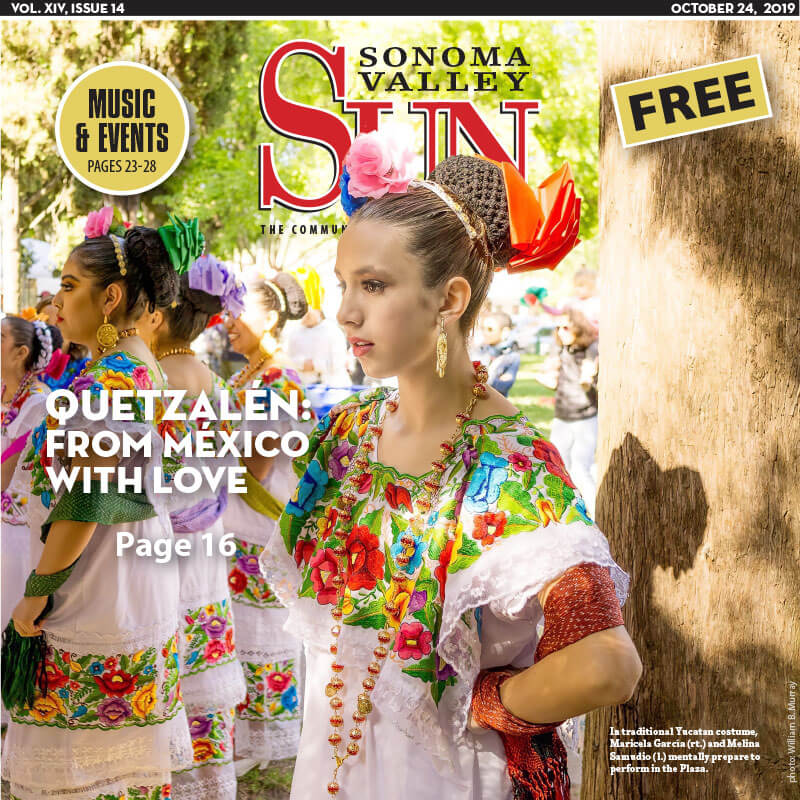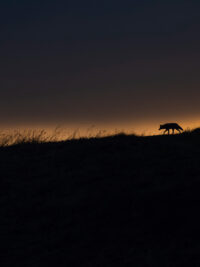Mexico’s rich and varied cultural heritage is promoted, taught, practiced, and performed in Sonoma Valley by our own folkloric dance troupe, Quetzalén. Their joyous dancing in brilliant traditional costume has been the heart of celebrations of Cinco de Mayo, Mexican Independence Day, and Días de los Muertos throughout the Valley for the past ten years. Victor Ferrer, the executive and artistic director of the group, has sustained the organization through ups and downs over those years through his personal commitment. But he would be the first to say that the dancers are the reason the group continues to thrive.
It is the secret life of many Sonomans whose day job may lack such satisfaction and beauty. These 25 adults, after a long day working as housekeepers, caregivers, servers, carpenters, cooks, custodians, gardeners, and receptionists, devote two hours to evening practice twice a week. In the El Verano School classroom where these dedicated dancers, joined by 20 young people, learn and refine their skills to perform the complicated steps of many dances, their pride, sense of achievement and joy are apparent. They have assumed the role of conveying their cultural heritage to the community they now live in.

Alberto Amezquita, a founder of Quetzalén who has danced with the group since 2008, and whose daughter Isabella also dances, told the Sun about his participation, “We do it to make people happy, to provide a moment of joy for audiences that usually are a mix of races.” Acknowledging that the four hours of practice a week is a serious commitment, Amezquita spoke of how important it is to the group to always improve, to work to be the best they can be.
Gilberto Suástegui explained why he and his wife enrolled their two children six years ago. “We wanted them to know our culture. I always loved seeing the folkloric dancers in Acapulco, where I grew up. So it filled me with joy when I first saw my child leaping and turning in the dances.” His daughter Pamela, a senior, says the group is “really close, like a family – we’ve been through a lot together.” She added, “It is really fun to get to experience Mexican culture. It’s taught me so much.”

Stephanie Rubio, above, part of the group for almost five years, has made folkloric dancing her senior project. The enthusiastic young woman is teaching after-school classes at Adele Harrison, Altimira, and Sonoma Valley High. The five couples in the high school group are learning a “vaquero” or cowboy dance from Baja California Norte which they will perform on December 18. Her research paper explores whether “integrating and preserving cultural traditions increases success for Latinx adolescents” in academic, social, and financial areas.
Mexico is of course a huge country and the cultures of its many regions reflect both differing geography and history. In the north, European immigrants brought, for example, accordion music and polka rhythms. In the south, colonists brought Africans whose whistling wind and percussion instruments fused to create the sound and rhythms typical of Chiapas, Veracruz, and Tabasco. To be considered “traditional,” a dance must have been danced for at least 50 years in that region. But, as Ferrer points out, new dances are always developing, which may someday be considered traditional too.

At first the group learned the better-known dances from Jalisco, Veracruz, and Nuevo León. Gradually they have expanded their repertoire to include traditional dances from 13 regions. Members of the group have traveled to Fresno and even Los Ángeles for workshops in order to learn new dances. And the group’s budget determines the ability to add a new regional dance, with the cost of a set of 12 costumes averaging $2,500 – $3,000. Their dream is to include a dance from each of the 31 states of Mexico plus the Federal District.

The dancers of Quetzalén are exuberantly fulfilling the mission to “perpetuate and display the splendor of Mexico’s traditional dance, music, and dress, and promote public awareness and appreciation of this rich cultural heritage.” Víctor Ferrer aspires for the group to become a recognized folkloric dance academy known beyond the Northbay, perhaps even throughout the country. He also hopes to see expansion of the afterschool dance program, currently at Flowery, El Verano, Woodland Star, the middle schools, and the high school, to all the schools in the District, perhaps with formal support. Presently the entire program is volunteer, and offered at no cost to the children of the District.
Quetzalén will dance at the Sonoma Plaza for Día, and will be in concert at the Veterans Building on Saturday, November 16.
Top photo: In traditional Yucatan costume, Maricela García (rt.) and Melina Samudio (l.) mentally prepare to perform in the Plaza.






Be First to Comment